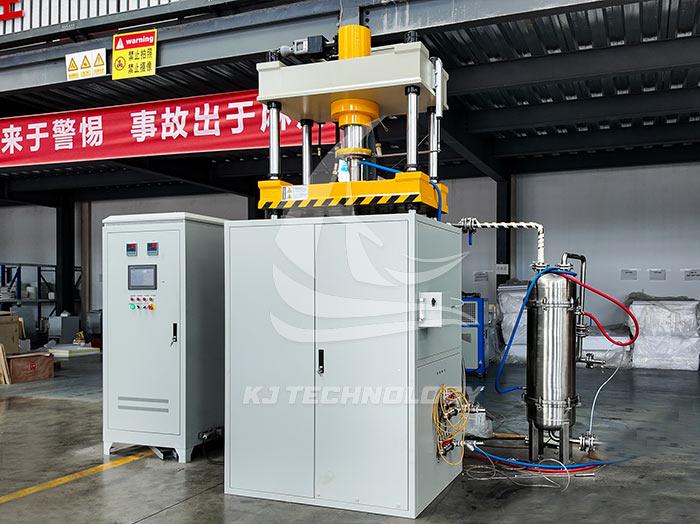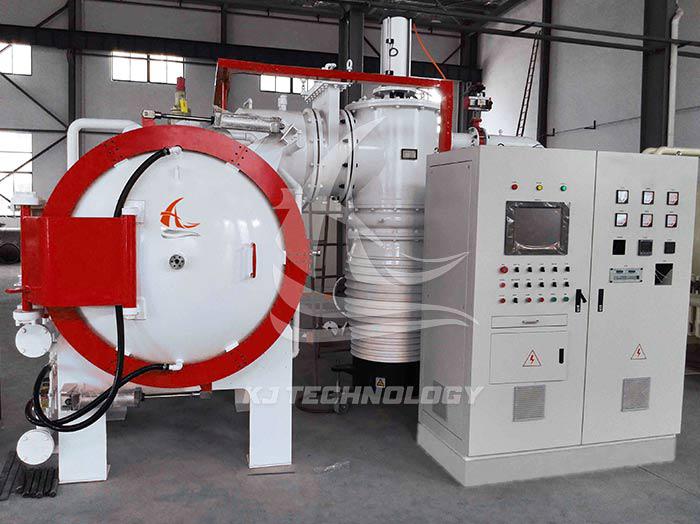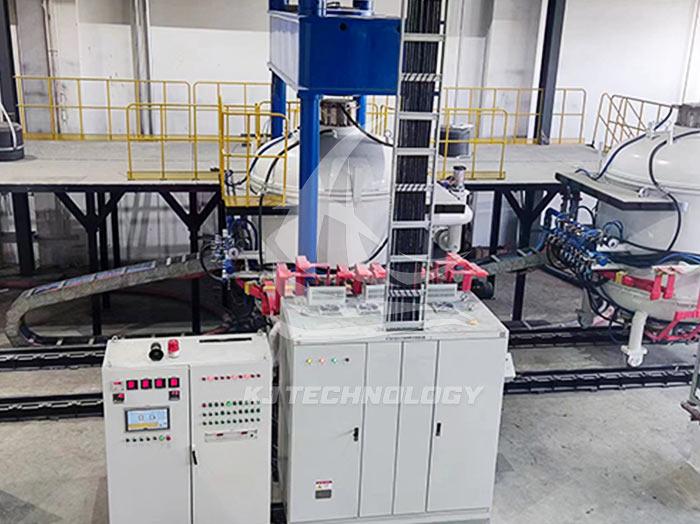Common faults and solutions of high vacuum muffle furnace
 06-10-2025 Author: KJ technology
06-10-2025 Author: KJ technology
The common faults and solutions of high vacuum muffle furnace are as follows:
1. Heating malfunction
Fault phenomenon:
The temperature cannot rise.
Uneven heating (local overheating or undercooling).
The heating element turns red abnormally or breaks.
Possible reasons:
Heating element damage (such as aging of silicon carbon rod/silicon molybdenum rod, resistance change exceeding 15%).
Loose or oxidized wiring terminals.
Improper installation of heating elements (uneven force leading to fracture).
resolvent:
Use a multimeter to check the resistance of the heating element. The normal resistance of the silicon carbon rod is 4-8 Ω, and the normal resistance of the silicon molybdenum rod is 0.5~2 Ω. If it exceeds the range, it needs to be replaced.
Ensure good electrode contact, no oxidation, and can be sanded with sandpaper.
Use a torque wrench to tighten the wiring terminals, and it is recommended to tighten the silicon molybdenum rod with a torque of 2-3N · m.
When installing the new rod, it should be kept parallel to avoid mechanical stress, and the heating should be stepped up (such as 100 ° C/h to the target temperature).
2. Temperature control malfunction
Fault phenomenon:
Large temperature fluctuations (exceeding ± 5 ° C).
Display "----" or jump.
PID regulation is unstable.
Possible reasons:
Thermocouple damage (breakage or oxidation).
PID parameter drift.
SSR (Solid State Relay) malfunction.
resolvent:
Use a multimeter to measure the on/off of a thermocouple. Normally, there should be a resistance of several to tens of ohms. If it is damaged, it needs to be replaced.
Perform PID automatic tuning (AT) or manually set parameters (such as P=15~30, I=200~400, D=50~100).
Replace SSR and pay attention to heat dissipation.
3. Poor sealing of furnace door
Fault phenomenon:
Furnace door leakage (atmosphere experiment failed).
Severe heat loss (slow heating).
Possible reasons:
The sealing strip is aging (with compression deformation exceeding 50%).
The hinge of the furnace door is loose.
Furnace deformation (caused by long-term high temperature).
resolvent:
Select ceramic fiber sealing tape (temperature resistance exceeding 1300 ° C), maintain a compression of 5% to 10% during installation, and use A4 paper testing method (if it cannot be pulled out after closing the door, it is qualified).
If the hinge is loose, it needs to be recalibrated.
4. Power failure
Fault phenomenon:
No response when powered on.
Frequent tripping.
Possible reasons:
The fuse is blown (overloaded or short circuited).
The main control board is damaged (capacitor bulging, relay burnout).
The power cord is aging.
resolvent:
Replace the fuse with the same specification (such as the commonly used 10A slow melting fuse for 380V models).
Check if the capacitor bulges and replace it with an industrial grade capacitor that can withstand 105 ° C.
Test relay contacts, oxidation can be treated with electronic cleaning agents.
Use a multimeter to measure the continuity of the power cord. If it is damaged, replace the silicone high-temperature wire.
5. Vacuum/atmosphere system malfunction
Fault phenomenon:
The vacuum degree decreases (slow pumping).
Oxygen content exceeds the standard (atmosphere experiment failed).
Possible reasons:
Vacuum pump oil contamination.
Pipeline leakage (O-ring aging).
The gas purity is insufficient.
resolvent:
Replace the dedicated vacuum pump oil (such as Edwards RV series).
Check the maximum vacuum of the pump (should reach 5 × 10 ⁻ ³ Pa), and use a helium mass spectrometer or soap water method to locate the leakage point.
Ensure that the purity of nitrogen/argon is ≥ 99.999% (O ₂<1ppm).
6. Abnormal alarm
Common types of alarms:
Overtemperature alarm (thermocouple failure or PID loss of control).
Overcurrent alarm (short circuit of heating element).
Gas leakage alarm (atmosphere system issue).
resolvent:
Check if the thermocouple is fully inserted (insertion depth ≥ 10cm).
Re calibrate the PID parameters.
Measure the resistance of the heating element and eliminate the short circuit.
Check if the pneumatic valve is not tightly closed.








